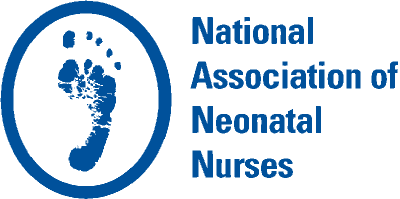Special Interest Group Update
Welcome to the newest NANN E-News section. In each issue, one of NANN’s special interest groups will share information in their area of focus.
Prolonged Stress and Nurse Burnout
Julie Williams, MSN APRN NNP-BC, Staff Nurse SIG
Job stress and burnout is a very real phenomenon, and nursing is no exception. According to the American Nurses Association 2011 Health and Safety Survey Report, the acute and chronic effects of stress due to being overworked were among the top two health and safety concerns among nurses. Notably this also was a top concern in the 2001 version of the survey. Prolonged high levels of stress can lead to burnout described as a state of fatigue, detachment, and cynicism (Tawfik, et al., 2017). In neonatal intensive care units (NICUs) burnout is most common in nonphysicians, daytime workers, and experienced providers (Tawfik et al., 2017). Individual factors such as previous experience, personal stress, and susceptibility to work stress were predictors of burnout (Braithwaite, 2008). Organizational factors, including NICUs with high patient volumes and high admission rates were associated with a high prevalence of burnout (Tawfik Phibbs, Sexton, Nisbet, Rigdon, 2017). This is important to recognize because nurses and their employers bear the responsibility of preventing provider burnout.
Nurses ultimately are responsible for their own health. Health should not simply include the absence of illness but also a state of mental, physical, and social well-being (World Health Organization, 2005). Nurses should strive to live “life to the fullest capacity, across the wellness/illness continuum, as they become stronger role models, advocates, and educators, personally, for their families, their communities and work environments, and ultimately for their patients” (American Nurses Association, 2017a). This is no easy feat, especially for a profession that spends so much time caring for others. However, through the implementation of deliberate, small changes, nurses can make their health a priority.
Nurses can make several small changes to minimize stress and lessen the chance of burnout. Fatigue is known to play a role in a nurse’s susceptibility to burnout (Braithwaite, 2008). Instituting healthy sleep habits like a consistent bedtime and sleep routine, initiating relaxing activities like a warm bath or reading, and avoiding alcohol and caffeine can minimize fatigue. Fostering good relationships among colleagues by communicating effectively, increasing self-awareness, and setting limits when appropriate facilitates strong bonds and the sense of belonging. Participating in activities that support professional growth and development, including opportunities provided through national organizations and unit leadership, contribute to job satisfaction and lessen the risk of burnout. Nurses also should maintain a healthy diet and exercise, take time for recreation and relaxation, and find an outlet to discuss feelings of stress. Most importantly, nurses must take the time to recognize symptoms of prolonged stress before burnout occurs. These efforts, in combination with a healthy work environment, not only reduce stress and burnout but also can lead to increased job satisfaction and retention.
Employers also have a hand in minimizing work stress and burnout by promoting a healthy work environment. A healthy work environment promotes a culture of safety and is empowering and satisfying (American Nurses Association, 2017b). Employers can facilitate their nurses’ well-being and increase job satisfaction and retention through a number of activities. Workplace incivility, bullying, and workplace violence can have detrimental effects on the nurse. Employers should take an active stance against this behavior and promote a culture of safety. Mentoring programs are a way employers can support their nurses and help them transition through new experiences. These programs also can help to deter bullying by facilitating an alliance of newer and more senior nurses. Encouraging and providing opportunities for professional growth and development can empower the nurse and lead to increased job satisfaction and less burnout (Braithwaite, 2008). Employers can support education and certification as well as offer opportunities for leadership like precepting, committee work, and teaching. Promoting fun at work and a scheduling model that allows for adequate days off can increase group cohesiveness and job satisfaction.
Job stress and burnout can be multifactorial. Interventions to minimize stress and prevent nurse burnout are two fold; those implemented by the nurse and those implemented by employers. Behavioral changes implemented by nurses can be done at small intervals and at the discretion of the nurse, but must be consistent to maintain the benefits. Interventions at the employer level may take more effort but are certainly attainable and are a good supplement to the nurses’ efforts. Prevention of nurse burnout is a joint effort, and nurses should prioritize their health and well-being.
References
American Nurses Association. (2011). 2011 ANA Health & Safety Survey Report. Retrieved from http://nursingworld.org/FunctionalMenuCategories/MediaResources/MediaBackgrounders/The-Nurse-Work-Environment-2011-Health-Safety-Survey.pdf
American Nurses Association. (2017a). Healthy Nurse, Healthy Nation. Retrieved from http://www.nursingworld.org/MainMenuCategories/WorkplaceSafety/Healthy-Nurse
American Nurses Association. (2017b). Healthy work environment. Retrieved from http://www.nursingworld.org/MainMenuCategories/WorkplaceSafety/Healthy-Work-Environment
Braithwaite, M. (2008). Nurse burnout and stress in the NICU. Advances in Neonatal Care, 8(6), 343–347.
Tawfik, D., Phibbs, C., Sexton, J., Nisbet, C., & Rigdon, J. (2017). Factors associataed with provider burnout in the NICU. Pediatrics, 139(5), 2016–4134. doi:10.1542/peds
Tawfik, D., Sexton, J., Kan, J., Sharek, P., Nisbet, C., Rigdon, J., . . . Profit, J. (2017). Burnout in the neonatal intensive care unit and its relation to healthcare associated infections. Journal of Perinatology, 37, 315–320. doi:10.1038/jp.2016.211
World Health Organization. (2005). Constitution of the World Health Organization. Retrieved from http://apps.who.int/gb/bd/PDF/bd47/EN/constitution-en.pdf?ua=1


